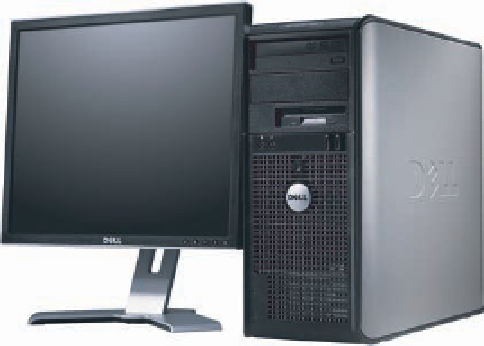Information Technology Reference
In-Depth Information
Systems Design, Implementation, and Maintenance and
Review
Systems design
determines how the new system will work to meet the business needs defined
during systems analysis.
Systems implementation
involves creating or acquiring the various
system components (hardware, software, databases, etc.) defined in the design step,
assembling them, and putting the new system into operation. The purpose of
systems main-
tenance and review
is to check and modify the system so that it continues to meet changing
business needs. Increasingly, companies are hiring outside companies to do their design,
implementation, maintenance, and review functions.
AND INDUSTRY
Information systems have been developed to meet the needs of all types of organizations and
people. The speed and widespread use of information systems, however, opens users to a
variety of threats from unethical people. Computer criminals and terrorists, for example, have
organizations are using information systems to prevent or thwart such attacks. Because of the
tragic shooting deaths at Virginia Tech in the spring of 2007, for example, some universities
are developing security alert systems that allow the school to send text messages to students'
if they see or encounter a problem or an emergency.
Security, Privacy, and Ethical Issues in Information
Systems and the Internet
Although information systems can provide enormous benefits, they do have drawbacks. Some
drawbacks are minor, such as always being connected at work and to your boss through the
including Social Security and credit card numbers, can be lost or stolen, resulting in credit
have been responsible for tens of millions of dollars of fraud from identity theft by stealing
reported that 25 percent of identity theft victims from this individual resulted in credit card
fraud, 16 percent encountered phone or utility theft, another 16 percent had bank fraud
committed against them, and 14 percent had employee-related fraud committed using iden-
tity theft. In the United States, it has been estimated that about 150 million computer records
of data loss has cost companies from about $90 to $300 per lost record. Some companies
have spent millions of dollars to investigate and counteract stolen computer records.
Computer-related mistakes and waste are also a concern. In Japan, a financial services
firm had trading losses of $335 mil-
lion due to a typing mistake in en-
tering a trade. Another computer
mistake stranded hundreds of United
related errors have caused airline de-
lays or cancellations with other air-
e-mail, called “spam,” can be a huge
viduals and organizations are trying
to find better ways to block spam.
Most computer monitors are now
manufactured and sold with an En-
ergy Star rating, including many Dell
monitors, such as the UltraSharp
19-inch flat panel LCD monitor.
(Source: © 2008 Dell. Inc. All rights
reserved.)


